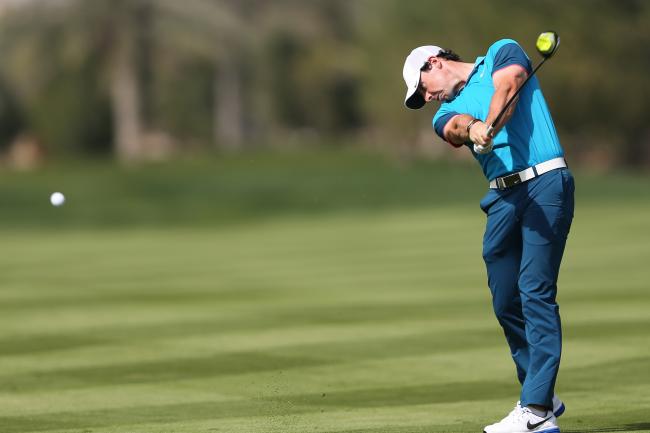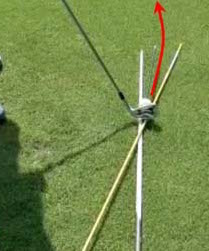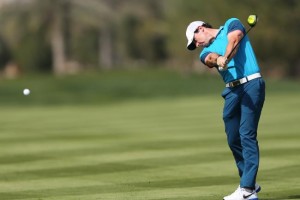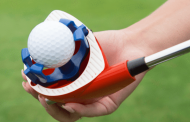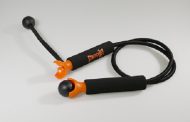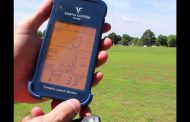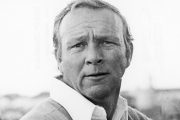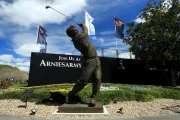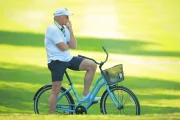Drawing the golf ball is something that many amateurs dream of yet few manage to achieve. A controlled draw is often the chosen shot for many golfers simply because it will produce more distance without having to produce any extra swing speed. Having the ability to produce a draw will effectively give you extra yardage with no extra effort
What makes a draw?
The first part of creating a draw is to understand it. The law of the draw states that the club must be traveling on an “in to out path” and the club face must be closed to that path at impact. If we achieve this we can then move the ball from right to left in the air.
For right handed golfers this will mean the club path needs to be moving to the right of the ball to target line and the club face must be pointing somewhere left of that target line. Below is a simple illustration of what the club should be doing at impact to create a draw shape. The yellow alignment stick in the below image represents the path that the club should be traveling, while the white line shows us where the club face should be pointing at impact. If we can create these movements at impact we will be able to produce a controlled draw.
How do I do this?
Now we know what the club needs to do to produce a draw, how do we do it? Well the first thing to understand is how the club face should look.
As we look at the image of Rory McIlroy below, you will see that he has rolled the club over after impact. This shows that he has released the club or gradually closed the face of the club through impact. For most amateurs the opposite tends to happen in the swing. We often see them “hold” their left arm and left wrist in an attempt to steer the golf ball towards the target. The golf swing moves on an angle and the club face should too. The first step to hitting a draw should be to release the club face and allow it to close or roll over like Rory through impact. If you hit a couple of shots left that’s a good place to start, and then we can begin to improve its finishing position by changing the path.
The club path is the second of the two major influences when it comes to producing a consistent draw. The path is basically the direction that the club travels as it passes through the golf ball, however to create the correct path we must look at what happens before the club reaches this point.
In the image below the red line shows us Rory’s Shaft plane at address, and the yellow line shows us where the club travels relative to the shaft plane. To produce the ideal draw we need to see the club dip slightly below this red line. When we combine this swing shape with a club face that is slightly closed to the path at impact we will produce a ball flight that starts right of target and curves back towards the target.
If the club approaches the ball from above the yellow line however it will be extremely difficult to produce a controlled draw. From that position you will most likely produce a pull hook if the club face is closed to the path, or a slice if the club face is open to the path.


